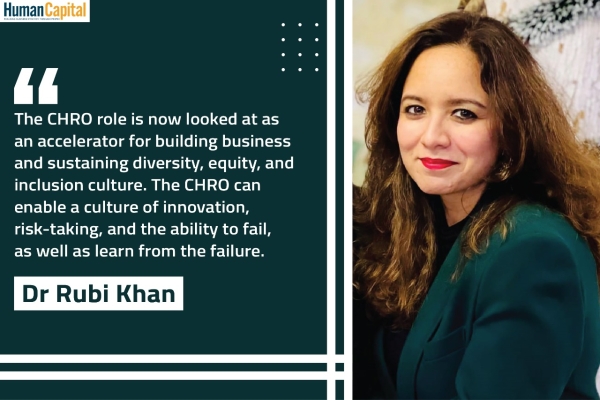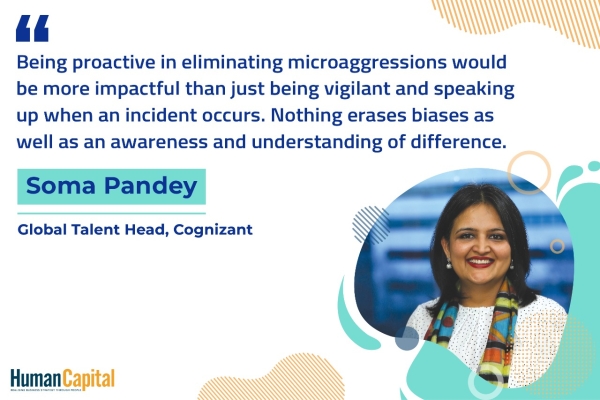“Making an impression is not a choice, it’s an inevitability” - Allison K
Executive Presence has for long been acknowledged as a critical function for leadership. However, its definition has been mysterious, and, many struggle to make sense of its diverse perspectives. The often-written about default assumption is to equate presence with appearance and presentation skills. While these are important pillars of Executive Presence, they make up a small piece of "The Executive Presence Maze" that helps leaders sustain goal-directed action in an organisation. As a result, leaders have often received feedback on presence without a roadmap on how to develop it.
Before we get down to How to develop Executive Presence, clarity needs to be provided on certain aspects. Executive Presence is not the same as flamboyance or movie-star charm. While it is often spoken about in the context of 'filling up the room' or 'commanding the room' it does not necessitate alpha-salesmen-like or smooth talk behaviours. In fact, level 5 leaders have great Executive Presence while conducting themselves with restraint, are mostly introverts, are far removed from smooth talk - have a quiet solid way of connecting with everyone to inspire positive action. So, Executive Presence is a great deal more than mere appearance and great communication. It is this solid ability of a Leader to be easily credible and to connect.
Executive Presence has been described as the 'Presence' a Leader commands in terms of how the Leader looks (appearance), speaks (communication) and behaves (gravitas). Leadership Presence, as its alternately called, refers to the style, substance and character the Leader demonstrates. What makes this all the more interesting is that both can be developed and inculcated in an individual.
Why does developing Executive Presence matter?
Making an impression is not a choice, it is an inevitability. You can therefore make a great, neutral, or a bad impression. Social outings are opportunities to make new connections, enhance networks by making the effort to create a great first impression. In new situations, demonstrating Executive Presence would involve-
1. Becoming more aware of your appearance - Are you dressed appropriately, more importantly, are you well groomed? For men and women, a good haircut / hairdo is a great place to start. And, for the men, a well-maintained beard, moustache. The use of a deodorant, good confident gait / posture can make you look professional and credible. Erring on the side of sobriety is a good idea, so the attire must be sober - so ladies, no over the top colours or make up for business meetings!
2. Gaining greater awareness on how you communicate and use your voice - be clear, present and strong. Good command over the language and vocabulary can enhance the opportunities to connect and inspire.
3. Becoming aware of your energy - when you walk into a room do you stand straight, with good energy - ready to interact and influence? Eye contact, firm handshake, a smile, how you speak, what you say- all count!
4. Consider your differentiating factor - What make you special? - How do you broadcast it so more people become aware of it? Etiquette- being mannerly, showing warmth, and composure are both important.
“Intentionality is sustained focus on a goal or initiative, one that has purpose and - for enterprises, Intentional Leaders are experienced and deliberate - they have a clearly laid out plan which is understood by everyone.”
Authenticity and Executive Presence
People can sniff it out if you are pretending - so presenting your authentic self is such an integral part of Executive Presence. That is the reason why Executive Presence is layered and different for different people - it interestingly has some common pieces, but, the puzzle comes together differently for each person. If you are all warmth and fizziness, people do not always trust what you know or are talking about - All competence and no warmth can come off as dry and arrogant. Warmth and Competence- The ability to be vulnerable not omniscient - can get people to trust you, like you and want to follow you.
Executive Presence and Intentionality
Intentionality is sustained focus on a goal or initiative, one that has purpose and - for enterprises, Intentional Leaders are experienced and deliberate - they have a clearly laid out plan which is understood by everyone. All understand why the team is doing what they are doing. A lack of intentionality slows down Strategic Execution - time, money, talent get wasted. People get discouraged, lose momentum. Intentionality and Executive Presence are deeply interwoven and is crucial for driving execution. Leaders with Executive Presence demonstrate Intentionality to inspire action.
Executive Presence - does it differ for men and women?
Women rarely do something unless they are 100% certain they can. Research shows men in comparison would feel confident even at 60% readiness. Women need to be more confident - develop a mindset of "I'm going to say yes" and figure how to make it happen. They ought to outline and manifest the Leader they want to be. Having Professional experience-being 5 questions deep is key, whether man or woman -it is important to know your content, be prepared and present it with authority.
Do you look forward to permanently working from home after the pandemic subsides?
Trending
-
SBI General Insurance Launches Digital Health Campaign
-
CredR Rolls Out 'Life Happens' Leave For Its Employees
-
Meesho Announces 30-Week Gender-Neutral Parental Leave Policy
-
Microsoft Unveils Tech Resilience Curriculum To Foster An Inclusive Future
-
60% Indian Professionals Looking For Job Change Due To COVID: Survey
-
SpringPeople And Siemens Collaborate For Digital Transformation Push
-
86% Professionals Believe Hybrid Work Is Essential For Work Life Balance: Report
-
Almost 1 In Every 3 People's Personal Life Affected Due To Work Stress
-
Meesho Rolls Out Reset And Recharge Policy For Employees
-
80% Of Talent Leaders & Academics Say Pandemic Changed Skill Needs For Youth: Report
-
Hero Electric Rolls Out 'Hero Care' Program For Employees
-
Human Capital In Collaboration With ASSOCHAM Hosts Virtual Conference
-
IKEA India, Tata STRIVE Collaborate To Create Employability And Entrepreneurship Opportunities
-
SAP India, Microsoft Launch Tech Skilling Program for Young Women
-
DXC Technology, NASSCOM Collaborate For Employability Skills Program
-
Lenskart To Hire Over 2000 Employees Across India By 2022
-
Mindtree Launches Learn-and-Earn Program
-
Tata AIA Extends 'Raksha Ka Teeka' To Its Employees
-
Swadesh Behera Is The New CPO Of Titan
-
NetConnect Global Plans To Recruit 5000 Tech Professionals In India
-
Hubhopper Plans To Hire 60% Of Indian Podcasters By 2022
-
Corporate India Needs More Women In Leadership Roles: Report
-
Aon to Invest $30 Million and Create 10,000 Apprenticeships by 2030
-
Tech Mahindra Launches ‘Gift a Career’ Initiative for Upskilling of Youth
-
40% Women Prefer Flexible Working Options in Post-COVID World: Survey
-
3 out of 4 companies believe they can effectively hire employees virtually: Report
-
Vodafone , CGI and NASSCOM Foundation launch digital skills platform
-
Odisha: Bank, postal employees to deliver cash for elderly, differently-abled persons
-
Skill India launches AI-based digital platform for "Skilled Workforce"
-
Hiring activity declines 6.73% in first quarter: Survey
-
70% startups impacted by COVID-19 pandemic
-
Bajaj Allianz Life ropes in Santanu Banerjee as CHRO
-
Over 70 Percent MSMEs look at cutting jobs to sustain businesses
-
93 Per Cent employees stressed about returning to office post-lockdown
-
Johnson & Johnson India announces family benefits for same gender partners
-
Indian firms turning friendly towards working mothers
-
Welspun India names Rajendra Mehta as new CHRO
-
Wipro partners with NASSCOM to launch Future Skills platform



Human Capital is niche media organisation for HR and Corporate. Our aim is to create an outstanding user experience for all our clients, readers, employers and employees through inspiring, industry-leading content pieces in the form of case studies, analysis, expert reports, authored articles and blogs. We cover topics such as talent acquisition, learning and development, diversity and inclusion, leadership, compensation, recruitment and many more.
Subscribe Now












































Comment